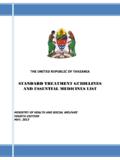Transcription of Principal Diagnosis Selection - www.hcpro.com
1 White paper 2011 hcpro , InC. No established Diagnosis 2 Unforeseen circumstances and complications 2 Looking ahead to iCD-10 4 Coders challenges 6 FeatUreSJennifer Avery, CCS, CPC-H, CPC, CPC-I, regulatory specialist for hcpro , Inc. Principal Diagnosis SelectionUnderstand the factors to determine the appropriate codesinpatient coders often struggle with Principal Diagnosis Selection . A clear understanding of the definition of Principal Diagnosis and the factors that play into Principal Diagnosis Selection is extremely important, although often confusing. The definition of Principal Diagnosis is the Diagnosis that is established after study to be the chief reason for the patient s inpatient stay. The circumstances of the patient s admission to the hospital always govern the Selection of Principal Diagnosis (scope of care, diagnostic workup, and the therapy provided). However, the coding conventions/guidelines for ICD-9-CM or AHA Coding Clinic for ICD-9-CM may often provide guidance on Principal Diagnosis Selection .
2 When the Principal Diagnosis is establishedPatients are often admitted based on signs and symptoms present at the time of admission. The ICD-9-CM Official Coding Guidelines for Coding and Reporting state, Codes for symptoms, signs, and ill-defined conditions from Chapter 16 [ICD-9-CM manual] are not to be used as a Principal Diagnosis when a related definitive Diagnosis has been established. It goes on to say that signs and symptoms that are considered an integral part of the definitive Diagnosis are not separately reported. For example, a patient presents with a fever and is diagnosed as having a urinary tract infection (UTI) and treated with IV Levaquin . Since fever is a common sign/symptom of a UTI, only the Diagnosis code for the UTI would be the physician may identify two or more diagnoses that meet the definition of Principal Diagnosis . The Official Coding Guidelines say that in this unusual event, either Diagnosis can be sequenced as Principal Diagnosis unless the circumstances of the admission, the therapy provided, the ICD-9-CM tabular list, or the alphabetic index indicate otherwise.
3 For example, a patient is admitted with shortness of breath and chest pain. The physician s definitive Diagnosis lists congestive heart failure and pneumonia as present on admission, and both are treated equally with IV meds. In this instance, either condition could be sequenced as the Principal Diagnosis . When two or more conditions are interrelated, each potentially meeting the definition for Principal Diagnosis such as diseases in the same chapter of 2 Principal Diagnosis Selection august 2011 2011 hcpro , InC. the physician s diagnostic statement identifies a symptom followed by contrasting/comparative diagnoses, the Official Coding Guidelines state that the symptom would be sequenced first ( Principal Diagnosis ).the ICD-9-CM manual or manifestations characteristically associated with a certain disease either condition may be sequenced first, unless the circum-stances of the admission, the therapy provided, the ICD-9-CM tabular list, or the alphabetic index indicate otherwise.
4 For example, a patient is admitted for gastroenteritis and dehydration both present on admission. The gastroenteritis is treated with po ( per os, Latin for by mouth ) meds and the dehydration is treated with IV meds. Since the gastroenteritis was treated orally and therefore could have been treated on an outpatient basis, the dehydration would be the Principal diag nosis based on the therapy provided. If, however, the patient had infectious gastro-enteritis that required IV medication to treat the condition, then the circum-stances of the admission are different and both are treated the Diagnosis has not been establishedThere are several guidelines to identify the appropriate reporting in the event a definitive Diagnosis has not yet been established. If the physician s diag-nostic statement identifies a symptom followed by contrasting/comparative diagnoses, the Official Coding Guidelines state that the symptom would be sequenced first ( Principal Diagnosis ) and the contrasting/comparative diag-noses would be listed as additional diagnoses.
5 For example, if the physician s diagnostic statement said chest pain, CAD (coronary artery disease) vs. pneu-monia, then chest pain would be the Principal Diagnosis based on the coding guideline. However, if the physician simply lists two or more contrasting/comparative diagnoses, then either can be sequenced first. So if the physician simply wrote CAD vs. pneumonia, either could be sequenced as the Principal Diagnosis . The coder should use the circumstances of the admission, therapy provided, etc., to determine whether one condition outweighs the other. If the Diagnosis documented at the time of discharge is listed as possible, probable, rule out, or similar terms indicating uncertainty, the coder is to code the condition as if it has been established. This may be difficult for coders who feel uncomfortable diagnosing a patient with something they may not have. However, coders must consider that they are trying to justify the reason the patient was admitted to the hospital.
6 A patient is not typi-cally admitted simply because he or she has a cough, but if it is possible that the patient may have pneumonia which would require treatment with IV meds that would warrant an inpatient admission. There are some exceptions to this rule, however. The ICD-9 chapter-specific guidelines say only to code practitioner-confirmed cases of HIV and avian or H1N1 influenza. Therefore, if the provider writes possible HIV, avian, or H1N1, coders must code for the signs/symptoms that are circumstances and complicationsIf a patient is admitted to the hospital with the intention of a therapeutic procedure or treatment plan, but due to unforeseen circumstances it cannot august 2011 Principal Diagnosis Selection 3 2011 hcpro , InC. Principal Diagnosis is the condition which, after study, was chiefly responsible for the admission to the hospital, even if the treatment was not carried out.
7 Be carried out, then based on the Official Coding Guidelines the Principal Diagnosis is the condition which, after study, was chiefly responsible for the admission to the hospital, even if the treatment was not carried out. For example, a patient is admitted for a prostatectomy due to benign pros-tatic hypertrophy (BPH). However, shortly after admission the patient devel-ops palpitations and the procedure is cancelled due to contraindications. The patient is evaluated and treated for the cause of the palpitations. The prin-cipal Diagnosis would still be the BPH. An additional code may be assigned from the series to identify the reason the procedure was not carried out ( contraindication, patient s decision, or for other reason). When a patient is admitted for treatment of a complication resulting from surgery or other medical care, the complication code is sequenced as the Principal Diagnosis .
8 If the complication is classified to the 996 999 series, the code lacks necessary specificity and therefore an additional code should be reported. For example, if a patient is admitted for a postoperative seroma, and per the documentation the causative organism is identified as Staphylococcus aureus, the Principal Diagnosis would be complication of the postoperative seroma with an additional Diagnosis to identify the causative some occasions a patient may develop an unrelated condition after admission requiring surgery. If this occurs, the unrelated condition requiring surgery fits the Uniform Hospital Discharge Data Set definition of additional diagnoses (treated, evaluated, diagnostic study, affects length of stay, or increases nursing care/monitoring), and the reason for the admission is still the Principal Diagnosis . For example, a patient is admitted for dehydration due to hypermesis from gastroenteritis and receives IV fluids and meds.
9 On day two of the admission, the patient begins to experience dysrhythmia, pul-monary edema, tachycardia, and hypoxia. The physician determines that the patient is in congestive heart failure and schedules him/her for a pacemaker. The reason for the admission is still the dehydration. The congestive heart failure is coded as an additional Diagnosis . Sometimes a patient is admitted following outpatient procedures or sur-geries. In this case, the condition that prompted the admission should be sequenced first. So if a patient is admitted for controlled postoperative bleeding after an outpatient biopsy of the bladder for bladder cancer, the postoperative bleeding is the reason for the admission. If no complication or other specific condition is identified and the patient is admitted for rou-tine postoperative care, then the reason for the surgery will serve as the Principal Diagnosis . For example, a patient is seen for arthroscopic knee surgery and is then admitted postoperatively and receives IV fluids and pain medications.
10 The physician identifies no other reason for the admission other than the reason for the surgery: patellar instability status post lateral release. Since no other specific condition or complication is identified, the reason for admission is 4 Principal Diagnosis Selection august 2011 2011 hcpro , InC. patellar instability. While this may not qualify for an inpatient admission, the coder or clinical documentation specialist should review the record and query based on pain management and IV meds as to the reason for treat-ment. Most likely, it isn t the patellar instability. If the reason for the inpatient admission is another condition unrelated to the surgery, coders should assign the unrelated condition as the Principal Diagnosis . For instance, if a patient undergoes carpal tunnel release to cor-rect carpal tunnel syndrome as an outpatient procedure and shortly after the patient is admitted and treated for angina, then the reason for the admission was the angina.
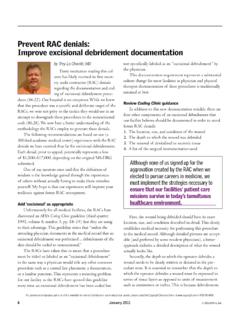

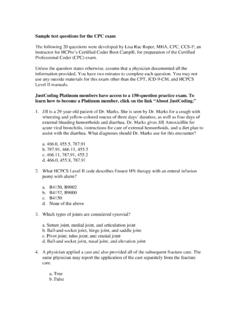
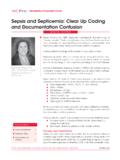





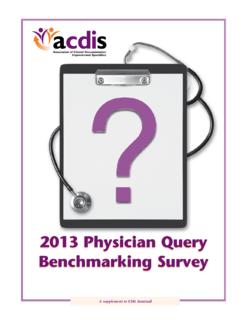

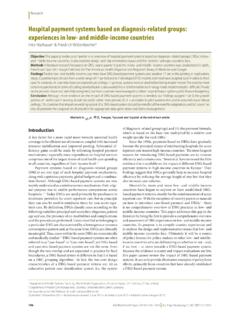
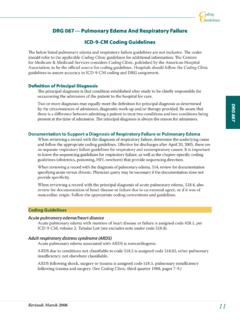
![List of Summer/Winter School [21 Days] Approved …](/cache/preview/0/6/1/5/2/b/1/a/thumb-06152b1a0458831206fb26f7ca1b05a4.jpg)



